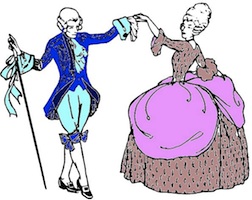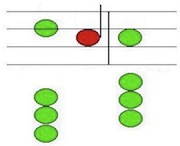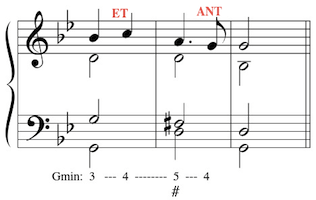
HARMONIC EXPANSIONS
CHAPTER 2: NONHARMONIC TONES
2.7 Anticipations
 |
 |
 |

|
At the beginning of the minuet-like movement excerpted above (Beethoven: Op.49, No.2), the F-sharp sixteenth note creates a brief dissonance against the G major harmony of the left hand (the notes of the left hand combine to form a G major triad). This F-sharp is a nonharmonic tone called an anticipation because it anticipates the F-sharp in the next measure. The second F-sharp, the one on beat one, combines with the notes of the left hand in this measure to form a D7 chord, resolving the dissonance.
Similarly, the G at the end of the first full measure clashes briefly with the measure's D7 harmony and resolves by anticipating the G on the downbeat of the next measure.
|
An anticipation, then, is a nonharmonic tone which is approached by a chord tone and resolves to the very same note with a change of harmony, usually on a strong beat. Anticipations may be approached in either direction and by any interval. See the schematic diagram to the right. Anticipations are common at the end of phrases, though this position is not illustrated at the top of the page. See instead the example below. |

|
 |
The illustration on the left shows, in four voices, an escape tone (ET) expanding tonic harmony and an anticipation expanding dominant harmony at the end of the phrase. |
 |
 |
 |
 |
Comments? Click here. |



